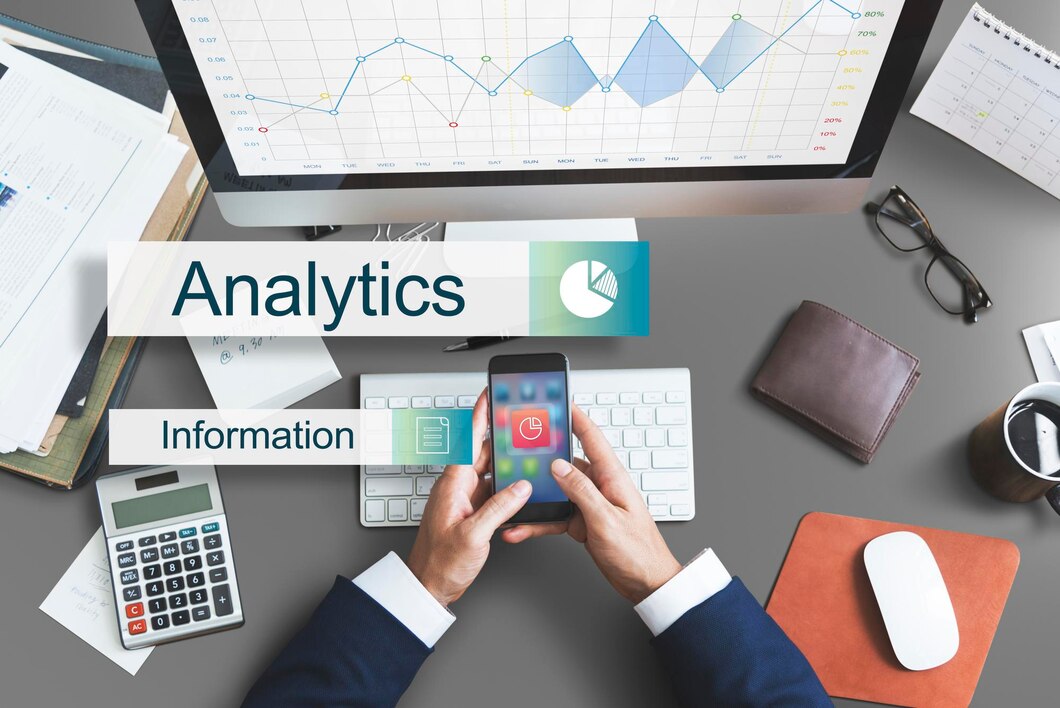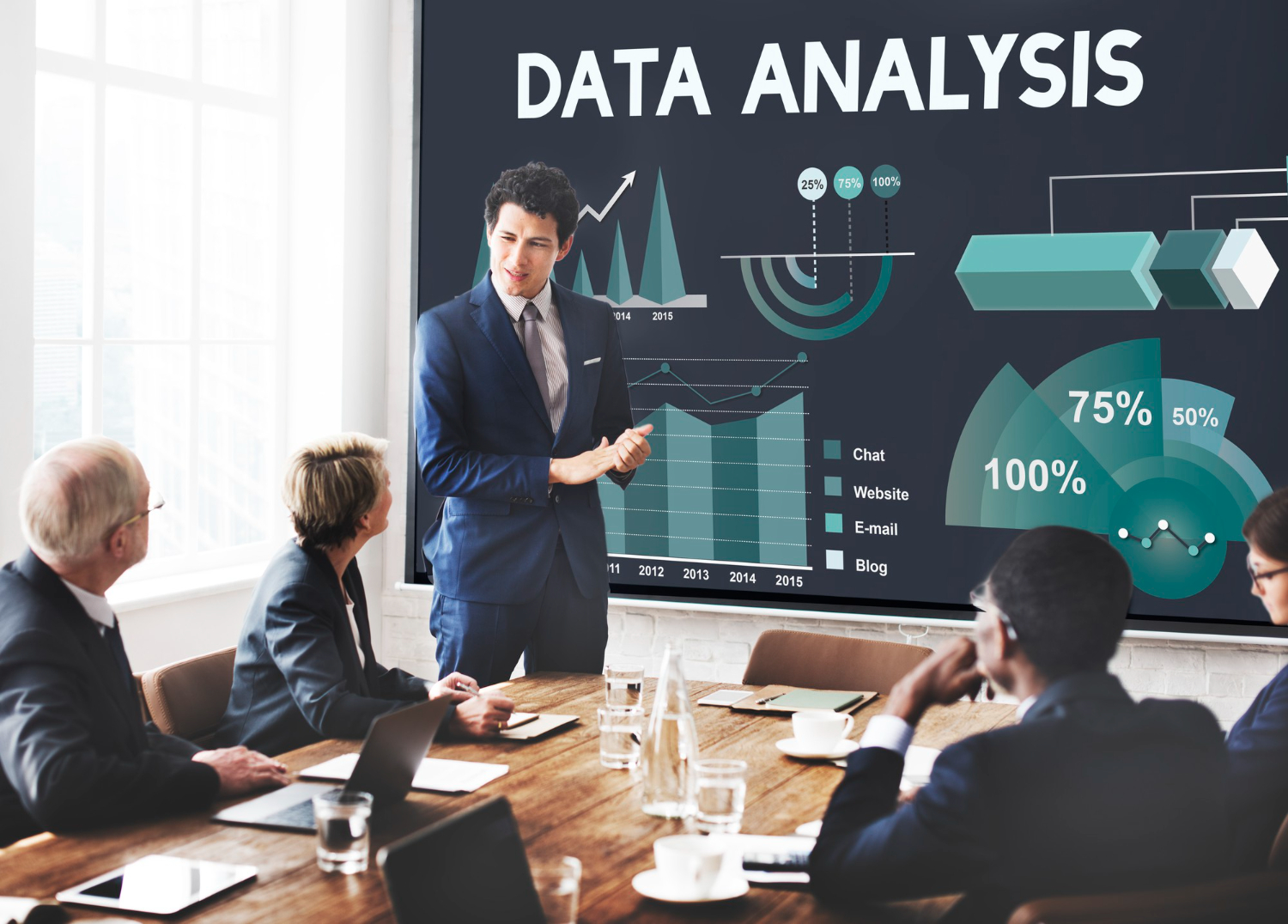Today, businesses use advanced technology to stay ahead in a data-driven world. Predictive analytics leads to this change. It helps organisations spot trends, improve operations, and make better decisions. By leveraging AI in business, companies can process vast amounts of data, uncover valuable insights, and improve efficiency. Predictive analytics is transforming business intelligence. It impacts marketing, finance, healthcare, and supply chain management industries. It’s sparking innovation and transforming how businesses operate.
As competition increases and customer needs change, predictive analytics helps businesses stay ahead. It allows them to anticipate needs and act before problems arise. Organisations can use real-time and historical data. This helps them predict future outcomes so they can make better strategic plans instead of relying only on past experiences. This article covers the basics of predictive analytics. It discusses its main benefits, real-world uses, and how businesses can use these tools to make better decisions and stay competitive.
Understanding Predictive Analytics
Predictive analytics uses data, statistical algorithms, and machine learning. It helps figure out the chances of future events by looking at past data. It allows businesses to move beyond reactive decision-making and adopt a proactive approach.
Predictive analytics often works with prescriptive analytics. Prescriptive analytics suggests actions based on predictions. It also pairs with descriptive analytics, which gives insights into past trends. Businesses can use these approaches to create a strong data-driven strategy. This helps them improve operations and lower uncertainty.
How Does Predictive Analytics Work?
Predictive analytics follows a systematic approach that involves:
- Data Collection: Collecting structured and unstructured data from several sources. This includes customer transactions, social media, IoT devices, and industry reports.
- Data Processing and Cleaning: Fix inconsistencies, fill in missing values, and standardise formats. This will improve data quality and boost accuracy.
- Statistical Analysis: Using advanced statistics, machine learning, and deep learning allows us to see patterns and trends in data.
- Predictive Modeling: Use past data to create models. These models can predict future trends, behaviours, and risks.
- Implement and Optimize: Use insights to shape business strategies. Keep an eye on model performance. Improve algorithms for better accuracy.
The Benefits of Predictive Analytics for Businesses

Predictive analytics helps businesses make data-driven decisions, optimise operations, and anticipate customer needs. By leveraging AI and machine learning, companies can enhance efficiency, reduce risks, and gain a competitive edge.
1. Enhanced Decision-Making
With predictive analytics in business intelligence, organisations can make data-driven decisions. This means they rely less on intuition. Companies can anticipate customer demands, market shifts, and financial risks with greater accuracy. This reduces uncertainty and ensures that business strategies align with emerging trends.
2. Improved Operational Efficiency
Predictive analytics improves businesses. It predicts demand, optimises resources, and reduces waste. For example:
- Demand forecasting helps retailers keep the right amount of stock. It prevents overstocking and shortages.
- Manufacturers optimise production schedules by anticipating upcoming equipment maintenance. This reduces downtime and also decreases maintenance costs.
- Airlines model their tickets by assessing demand and competitive pricing.
3. Personalised Customer Experiences
By analysing customer behaviour, companies can customise marketing campaigns and product recommendations. Online shopping stores employ AI to provide personalised recommendations. Their recommendations are based on previous purchases, user preferences and browsing history. Moreover, predictive analytics allows:
- Customer support is based on personalisation and uses automated chatbots and virtual assistants.
- Recommendation engines help customers find relevant information, products, or services.
- Dynamic pricing strategies that fluctuate pricing according to consumer demand and rival activity.
4. Risk Management and Fraud Detection
Predictive analytics is commonly used in finance and cybersecurity for fraud detection. Banks and financial organisations employ machine learning to detect fraudulent transactions. Helping them mitigate risk faster. Some applications include:
- Detecting irregularities in transaction data to raise alerts on potential fraud.
- Assessing credit risk involves looking at how borrowers behave. It also includes predicting the chances of them defaulting on a loan.
- Practising predictive cyber threat analytics helps identify possible security breaches. This involves looking into potential system misuses.
5. Increased Revenue and Profitability
Businesses using predictive analytics can improve pricing, boost marketing budgets, and discover new revenue streams. By anticipating trends, companies can stay ahead of competitors and drive long-term growth.
- Subscription-based businesses predict customer churn and implement retention strategies to maintain long-term revenue.
- Financial institutions optimise investment decisions using real-time market trend predictions.
- The travel and hospitality industries use predictive models. These models help boost booking rates and occupancy levels.
Key Applications of Predictive Analytics Across Industries

Predictive analytics is transforming industries by enabling smarter decision-making and efficiency. From retail and healthcare to finance and manufacturing, businesses use it for demand forecasting, risk management, personalised marketing, and operational optimisation.
1. Predictive Analytics in Marketing and Sales
- Customer Segmentation: Identifying high-value customers and tailoring campaigns accordingly.
- Lead Scoring: Evaluating potential customers based on behavioural data to improve conversion rates.
- Churn Prediction: Detecting customers at risk of leaving and implementing retention strategies.
- Campaign Optimisation: Analysing ad performance to refine marketing efforts and maximise ROI.
2. Predictive Analytics in Finance and Banking
- Fraud Detection: Identifying fraudulent transactions through anomaly detection.
- Credit Risk Assessment: Evaluating a borrower’s likelihood of defaulting on loans.
- Stock Market Forecasting: Analysing historical trends to predict stock price movements.
- Automated Trading: Using AI-driven models to make real-time investment decisions.
3. Predictive Analytics in Healthcare
- Disease Prediction: Identifying early signs of diseases based on patient data.
- Patient Readmission Prevention: Assessing risk factors to improve post-treatment care.
- Drug Discovery: Accelerating pharmaceutical research through AI-powered predictions.
- Hospital Resource Management: Optimising staffing and equipment allocation based on patient flow trends.
Implementing Predictive Analytics in Business
Implementing predictive analytics in business involves data collection, model selection, and continuous optimisation. Companies must integrate the right tools, ensure data quality, and align analytics with business goals for maximum impact.
1. Investing in the Right Technology
Popular predictive analytics tools include:
- Google Cloud AI – Provides machine learning models for predictive insights.
- IBM Watson Analytics – Offers AI-powered data analysis and visualisation.
- Microsoft Azure Machine Learning – Helps businesses build and deploy predictive models.
- SAP Predictive Analytics – Tailored for enterprise-level predictive intelligence.
2. Building a Data-Driven Culture
- Encouraging data literacy across all departments.
- Training employees on AI and analytics tools.
- Promoting collaboration between data scientists and business leaders.
3. Ensuring Data Privacy and Ethical AI Use
- Complying with data protection regulations such as GDPR.
- Implementing ethical AI practices to avoid biases in predictive models.
- Using secure cloud solutions for data storage and access control.
The Future of Predictive Analytics in Business

AI, real-time data processing, and automation will drive the future of predictive analytics in business. As technology advances, businesses will gain deeper insights, enabling smarter decision-making and improved efficiency across industries.
1. AI-Powered Automation
AI and machine learning will boost predictive analytics. This means automated decision-making will require less human input.
2. Real-Time Predictive Insights
Businesses will rely more on real-time data streams. This helps them make quick predictions and adjust strategies instantly.
3. Widespread Adoption Across SMEs
As technology becomes cheaper, small and medium-sized enterprises (SMEs) will use predictive analytics. This will help them stay ahead of the competition.
Predictive Analytics: Transforming Business Decision-Making with AI-Powered Insights
Predictive analytics is transforming business decision-making. It uses data, AI, and business intelligence to do so. Predictive analytics helps businesses work better, reduce risks, and enhance customer experiences. Business smart decisions come from using AI insights, which results in driving continual, long-lasting development in an aggressive market.


